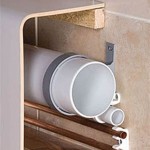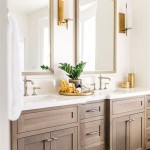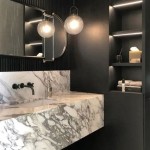How Much Does It Cost To Add Another Bathroom To My House?
Adding a bathroom to a house can significantly increase its value and improve its functionality. However, it is a substantial undertaking that requires careful planning and a clear understanding of associated costs. These costs can vary widely based on several factors, making it crucial to research and budget effectively before commencing the project. This article will provide a comprehensive overview of the elements influencing the cost of adding a bathroom, offering insights into planning and budgeting for this home improvement project.
Key Factors Influencing Bathroom Addition Costs
Several interconnected factors contribute to the overall expense of adding a bathroom. These factors encompass the bathroom's size and location, plumbing and electrical work, materials and fixtures, labor costs, and potential unforeseen expenses. Understanding these elements is paramount for formulating an accurate budget and minimizing potential cost overruns.
Bathroom Size and Location: The size of the intended bathroom is a primary determinant of cost. A larger bathroom requires more materials, more labor, and potentially more complex plumbing and electrical work. Even a small difference in square footage can lead to a considerable increase in the overall budget. The location of the new bathroom within the house also plays a significant role. Constructing a bathroom adjacent to existing plumbing lines is generally less expensive than adding one in an area requiring new plumbing installations. Access to existing electrical infrastructure also impacts costs.
For example, if the new bathroom is situated directly above an existing bathroom or kitchen, the plumbing tie-ins will be simpler and less costly. Conversely, adding a bathroom in a basement or on an upper floor far from current plumbing systems necessitates extensive pipe rerouting and possibly the installation of a pump to move wastewater, thereby inflating the project's price tag. Consider the existing structure and how it will accommodate the new plumbing. This involves evaluating the accessibility of pipes and whether walls or floors need to be opened to accommodate the new installation. Dealing with load-bearing walls presents a higher level of complexity and subsequently increases the labor cost.
Plumbing and Electrical Work: Plumbing and electrical work constitute a substantial portion of the bathroom addition budget. Correctly running new water lines, drain lines, and vent stacks is essential for the bathroom's functionality. The complexity of this work depends on the distance from existing plumbing connections, the type of materials used, and any necessary modifications to the main water supply or drainage system. Electrical work includes installing wiring for lighting, outlets, and ventilation fans, as well as ensuring compliance with local electrical codes. Failure to adhere to these codes can result in costly corrections and potential safety hazards.
The choice of fixtures also influences the plumbing costs. A standard toilet installation is less expensive than installing a high-efficiency model that requires specific plumbing considerations. Similarly, a simple shower installation is cheaper than a custom-built shower with multiple showerheads and intricate tiling. It is recommended to consult with a qualified plumber early in the planning process to obtain accurate estimates and address any potential challenges related to plumbing modifications or upgrades. Consider whether new water heaters or upgraded electrical panels are needed to accommodate the increased demand from the new bathroom. These upgrades can substantially impact the overall cost.
Materials and Fixtures: The cost of materials and fixtures varies widely depending on the quality, style, and brand selected. From basic, budget-friendly options to high-end luxury items, the choices available cater to a wide range of preferences and budgets. Flooring, tiles, countertops, cabinets, toilets, sinks, faucets, showers, and bathtubs all contribute to the overall material costs. Opting for higher-quality materials can increase the upfront cost but often results in greater durability and longevity, potentially saving money in the long run through reduced maintenance and replacement expenses.
For example, ceramic tiles are generally more affordable than porcelain or natural stone tiles. Likewise, a laminate countertop is cheaper than granite or quartz. The choice of fixtures also affects the budget. A standard white toilet and sink are less expensive than designer options with unique shapes or features. Consider the long-term value and aesthetic appeal when selecting materials and fixtures. Balancing quality and cost is essential for creating a bathroom that meets both functional and budgetary needs. Obtain multiple quotes from different suppliers to compare prices and ensure competitive rates.
Labor Costs: Labor costs comprise a significant portion of the total bathroom addition expenses. These costs include the fees paid to contractors, plumbers, electricians, carpenters, and other skilled professionals involved in the project. Labor rates vary depending on the location, the contractor's experience, and the complexity of the work. It is essential to obtain multiple bids from different contractors to compare prices and ensure that all estimates are detailed and comprehensive. A reputable contractor should provide a clear breakdown of labor costs, including hourly rates, projected hours, and any additional fees for specific tasks. Verify the contractor's licensing and insurance to protect against liability in case of accidents or damages during the project.
It is also vital to ensure that the contractor has a thorough understanding of local building codes and regulations. Improperly executed work can lead to costly rework and potential fines. Obtain references from previous clients and review online reviews to assess the contractor's reputation and reliability. Clear communication and a detailed contract are crucial for minimizing misunderstandings and ensuring that the project stays on track and within budget. Be sure to include clauses in the contract that address change orders, payment schedules, and dispute resolution processes.
Unforeseen Expenses: Unforeseen expenses are a common occurrence in home renovation projects, and bathroom additions are no exception. Hidden plumbing issues, electrical problems, structural damage, and unexpected material price increases can all contribute to cost overruns. It is prudent to set aside a contingency fund, typically 10-15% of the overall budget, to cover these unexpected costs. Regular communication with the contractor and proactive problem-solving can help mitigate the impact of unforeseen expenses.
For instance, during demolition, it might be discovered that the existing plumbing lines are corroded and need replacement. This would necessitate additional labor and materials, increasing the overall project cost. Similarly, if the electrical wiring is outdated or non-compliant with current codes, it may require upgrades, adding to the expenses. It is recommended to conduct a thorough inspection of the existing infrastructure before starting the project to identify potential issues and address them proactively. This can help minimize surprises and keep the project within budget. Engage a qualified inspector to assess the structural integrity of the planned area for the new bathroom. This can reveal potential issues before construction begins.
Strategies for Cost Management
Adding a bathroom can be a significant investment, but there are several strategies to manage costs effectively. These strategies include careful planning, prioritizing needs, considering DIY options, and seeking competitive bids from multiple contractors.
Detailed Planning and Budgeting: The foundation of a successful and cost-effective bathroom addition is meticulous planning and budgeting. This involves defining the project scope, creating a detailed design, and estimating all associated costs. Begin by outlining the specific needs and objectives of the new bathroom. Is it intended as a master bathroom, a guest bathroom, or a powder room? This will influence the size, layout, and features required. Develop a detailed design that includes the placement of fixtures, the type of materials to be used, and the overall aesthetic. Obtain accurate measurements and create a floor plan to visualize the space and ensure that it meets functional requirements.
Once the design is finalized, create a comprehensive budget that includes all anticipated expenses, such as materials, labor, permits, and contingency funds. Obtain quotes from multiple suppliers and contractors to compare prices and ensure competitive rates. Regularly review and update the budget as the project progresses, tracking expenses and identifying any potential cost overruns early on. Consider using project management software or spreadsheets to organize and monitor the budget effectively.
Prioritizing Needs vs. Wants: Distinguishing between essential needs and desired wants is crucial for managing costs effectively. Focus on fulfilling the fundamental requirements of the new bathroom before indulging in luxury features or high-end finishes. For example, a functional toilet, sink, and shower are essential needs, while heated floors, a jacuzzi tub, or a designer vanity are considered wants. Prioritize the essential elements and allocate the budget accordingly. If budget constraints arise, consider postponing or eliminating the non-essential features. It is often possible to upgrade these features later when more funds are available.
Choose durable and cost-effective materials for the essential elements, such as ceramic tiles for flooring and a standard white toilet and sink. These options are often more affordable than high-end alternatives and can still provide a functional and aesthetically pleasing result. Focus on areas that have the greatest impact on functionality and comfort, such as a reliable shower system and adequate lighting. By prioritizing needs over wants, it is possible to create a functional and attractive bathroom without exceeding the budget.
DIY vs. Professional Installation: Deciding which tasks to handle as a DIY project and which to leave to professionals can significantly impact the overall cost. Certain tasks, such as painting, tiling, and basic carpentry, can be undertaken by homeowners with the necessary skills and experience. This can save on labor costs and provide a sense of accomplishment. However, plumbing and electrical work should generally be left to licensed professionals due to the complexity and potential safety hazards involved. Improperly installed plumbing or electrical systems can lead to costly repairs, property damage, and even personal injury.
Assess your skills and experience honestly before deciding to take on any DIY tasks. It is often more cost-effective to hire a professional than to attempt a task beyond your capabilities and risk making costly mistakes. Obtain the necessary permits and comply with local building codes if undertaking DIY projects. Research the requirements and best practices for each task before starting, and consider taking online courses or workshops to enhance your skills. Prioritize safety and always wear appropriate protective gear when working on DIY projects.
Obtaining Multiple Bids: Securing multiple bids from different contractors is an essential step in managing the cost of a bathroom addition. Obtaining at least three bids allows for comparing prices, assessing the scope of work, and evaluating the contractor's qualifications and experience. A detailed bid should include a breakdown of labor costs, material costs, and any additional fees. Compare the bids carefully, paying attention to the quality of the materials proposed, the timeline for completion, and the contractor's reputation. Do not automatically choose the lowest bid, as this may indicate substandard work or materials. Instead, focus on selecting a contractor who offers a fair price, has a proven track record, and communicates effectively.
Check the contractor's licensing and insurance to ensure they are qualified and protected. Obtain references from previous clients and review online reviews to assess their reputation and reliability. Ask each contractor to provide a detailed explanation of their approach to the project and their experience with similar bathroom additions. Clear communication and a detailed contract are crucial for minimizing misunderstandings and ensuring that the project stays on track and within budget. Be sure to negotiate payment terms that are fair and reasonable, and avoid paying a large upfront deposit before the work has begun.
Long-Term Value and Considerations
When considering the cost of adding a bathroom, it is important to factor in the long-term value and benefits it provides. A well-designed and properly installed bathroom can significantly increase the property's resale value and improve the quality of life for its occupants.
Increased Property Value: Adding a bathroom can be a worthwhile investment that enhances the property's resale value. The number of bathrooms in a house is often a key factor for potential buyers, and adding an additional bathroom can make the house more appealing and competitive in the market. A master bathroom addition is particularly desirable, as it provides added privacy and convenience for the homeowners. The increase in property value will depend on several factors, including the location, the size and quality of the bathroom, and the overall condition of the house. Consult with a real estate appraiser or agent to get an estimate of the potential increase in property value resulting from the bathroom addition.
Consider the demographic of potential buyers in the area. Families with children often prioritize having multiple bathrooms, while empty-nesters may prefer a luxurious master bathroom. Design the bathroom to appeal to the target market and maximize its potential impact on property value. Invest in high-quality fixtures and finishes that will stand the test of time and enhance the bathroom's aesthetic appeal. Pay attention to details such as lighting, ventilation, and storage to create a comfortable and functional space. A well-designed bathroom can be a significant selling point and increase the property's market value.
Improved Quality of Life: Beyond the financial benefits, adding a bathroom can significantly improve the quality of life for the occupants of the house. Having an additional bathroom reduces congestion during peak hours and provides added privacy and convenience. This is particularly beneficial for families with multiple members or for households that frequently host guests. A master bathroom provides a private retreat for the homeowners, offering a space to relax and rejuvenate. The added convenience and comfort can reduce stress and improve overall well-being.
Consider the specific needs and preferences of the occupants when designing the bathroom. Incorporate features that enhance comfort and functionality, such as a spacious shower, a comfortable bathtub, or ample storage space. Pay attention to lighting and ventilation to create a pleasant and healthy environment. Choose materials and finishes that are easy to clean and maintain, reducing the time and effort required for upkeep. A well-designed bathroom can enhance the daily lives of the occupants and provide a sanctuary within the home.
Long-Term Maintenance Costs: When budgeting for a bathroom addition, it is important to consider the long-term maintenance costs associated with the new space. This includes the cost of cleaning, repairs, and potential replacements of fixtures and materials. Choose durable and low-maintenance materials that will withstand daily wear and tear. Opt for high-quality fixtures that are less likely to require repairs or replacements in the long run. Regularly inspect the plumbing and electrical systems to identify and address any potential issues early on.
Establish a cleaning routine to keep the bathroom clean and hygienic. Use gentle cleaning products that will not damage the fixtures or materials. Repair any leaks or water damage promptly to prevent further deterioration. Consider purchasing a home warranty that covers the cost of repairs or replacements of certain appliances and systems. Long-term maintenance costs can add up over time, so it is important to factor them into the overall budget and plan accordingly. By investing in durable materials and implementing a regular maintenance routine, it is possible to minimize these costs and ensure the longevity of the bathroom addition.

What S The Average Cost To Add A Bathroom Neighbourly

Cost To Add A Bathroom 2024 Guide Forbes Home

How Much Does It Cost To Add A Bathroom

How Much Does An Extra Bathroom Add To The Value Of A House Resi

What Is The Cost To Add A Half Bathroom Badeloft

Average Home Addition Cost In 2024 Forbes

How To Add Another Bathroom Your House Archiscene

Here S How Much It Costs To Add A Second Bathroom Your New York City Apartment And The Best Place Put

Increase The Value Of Your Home With Roi A Bathroom

2024 Shower Installation Cost Type Materials And Labor Angi
Related Posts







